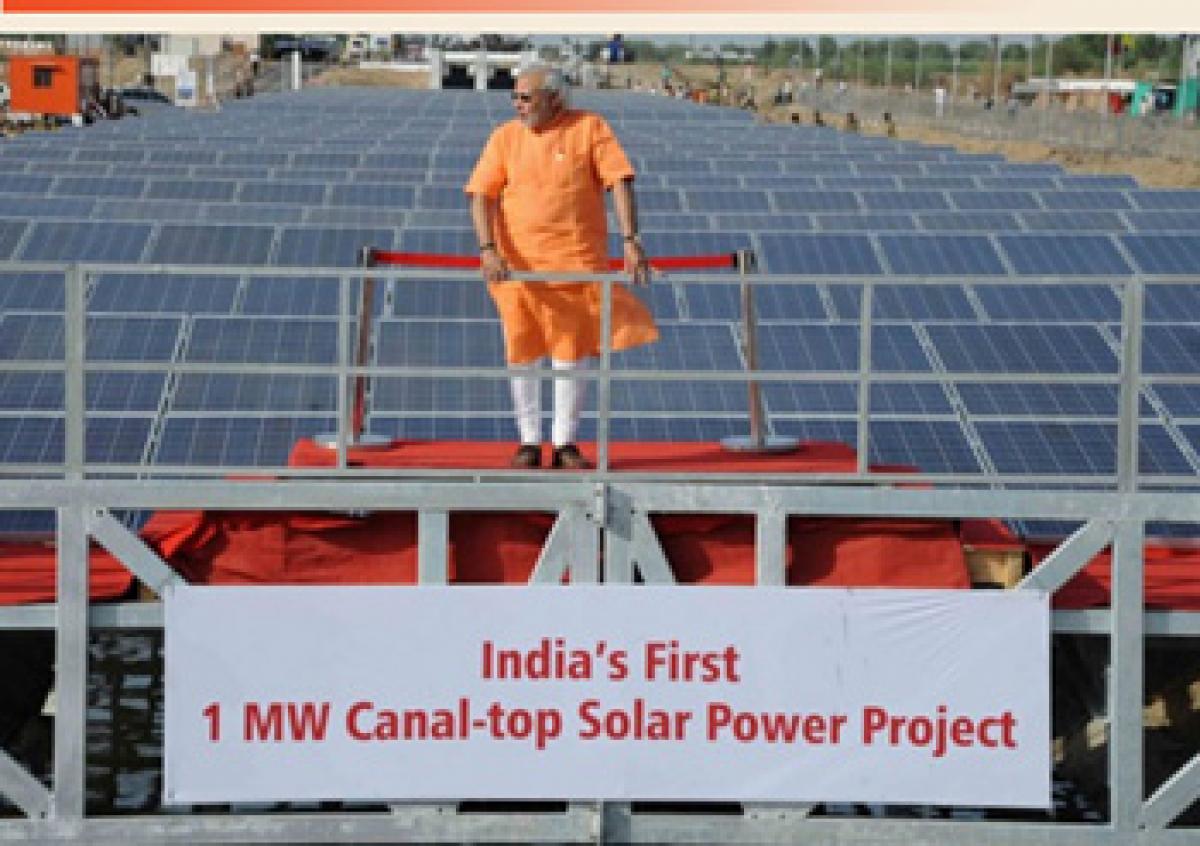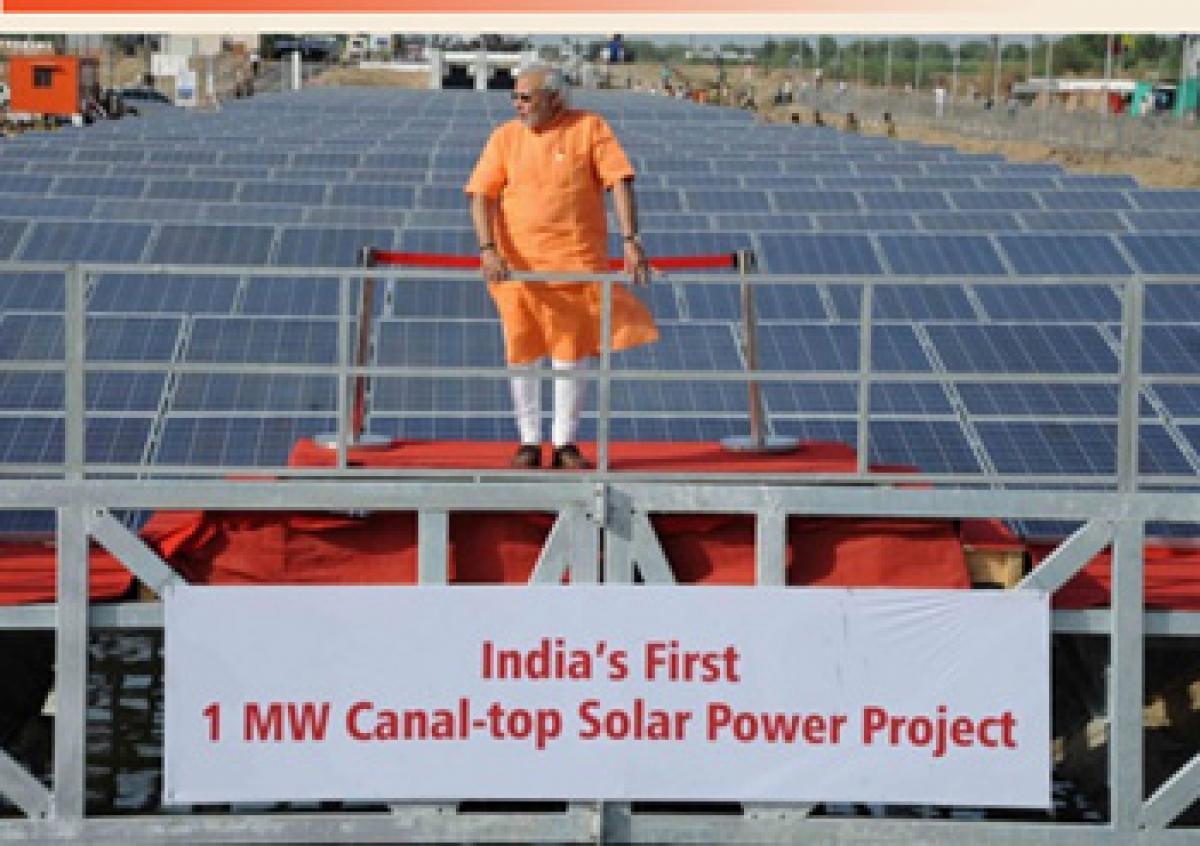Live
- A feminist lens on our mythology
- Prakasam police rescues kidnapped toddler within hours
- Time to get rid of Sattavad and Parivarvad politics
- Extend neither spl nor ill treatment
- Must-Watch OTT Originals in 2024: The Year’s Best Shows and Movies
- 40 Indian startups secure over $787 mn in a week
- India now formidable force on chess board
- Raghavendra Mutt pontiff visits Tirumala
- Whistleblower of OpenAI found dead in US apartment
- Trump’s US-first policy & India’s strategic latitude
Just In

Solar energy plans leapfrog . Just when a Swiss pilot \'s solar powered aircraft mesmerised the world by setting a record of longest solo flight without a drop of fuel, India’s solar energy ambitious plans are set to leap frog.
 Just when a Swiss pilot 's solar powered aircraft mesmerised the world by setting a record of longest solo flight without a drop of fuel, India’s solar energy ambitious plans are set to leap frog. The Centre has revised cumulative targets under National Solar Mission from 20,000 MW by 2021-22 to 1,00,000 MW – a quantum jump.
Just when a Swiss pilot 's solar powered aircraft mesmerised the world by setting a record of longest solo flight without a drop of fuel, India’s solar energy ambitious plans are set to leap frog. The Centre has revised cumulative targets under National Solar Mission from 20,000 MW by 2021-22 to 1,00,000 MW – a quantum jump.
The Ministry of new and renewable energy (MNRE) has selected 50 cities to be developed as solar centres. Of these, 44 cities have already prepared master plans. If the goals set for the solar energy are realised, the country will surpass Germany which is a global leader in solar power generation by producing three times higher energy from the discipline.
Though technology is getting cheaper, experts feel that the sector might be a game changer so the government should revisit its policy of financing of projects. They feel that at present India RE projects are financed for 10-12 years with an annual interest rate of 12-13 per cent while in Europe and US, the projects are funded for 17-18 years with an interest rate of 4-5 per cent.
Experts feel that the RE sector will create one million jobs by 2022 as the government has scaled up the target which includes100 GW from the solar sector and 60 GW from the wind energy by 2022. Various states are coming up with their own plans of regulatory norms and other policies. Almost every day, states are coming up with solar plant announcements as well as commencements.
The world’s largest solar project is going to be set up in Rewa ,which will have 750 MW capacity plant spread over 1,500 hectares of land. Similarly, M Chinnaswamy stadium in Karnataka has emerged as yet another hallmark of grid connected solar roof top system , now luring others to follow suit. It has now 400KW of net metered rooftops power plant.
About two dozen states have notified net metering policy, laced with incentives to promote the rooftop solar plants connected with grid. The net metering is the process through which discoms will generate bills to solar power plant owners as per consumption and credit will be given to the consumer of contribution to the gird is higher than the consumption.
The total investment in setting up 100 GW will be around Rs 6,00,000 crore. In the first phase, the hovernment is providing Rs 15,050 crore as capital subsidy to promote solar capacity addition, official sources say. This capital subsidy will be provided for Rooftop Solar projects in various cities and towns, for Viability Gap Funding (VGF) based projects to be developed through the Solar Energy Corporation of India and for decentralised generation through small solar projects.
The price of solar energy has come down significantly from Rs 17.90 per unit in 2010 to under Rs 7 per unit, thereby reducing the need of VGF/ GBI (Generation based incentive) per MW of solar power. The new solar target of 100 GW is expected to abate over 170 million tonnes of CO2 over its life cycle.
Official sources said that till December last year,17 Solar Parks of aggregate capacity of 12759 MW were planned to be set up in 12 States and a grant of Rs 172.50 crore has been released to Solar Energy Corporation of India (SECI) towards development of solar parks. Further, proposal for release of Rs 80 crore have been initiated.
By Neeraj Bajpai

© 2024 Hyderabad Media House Limited/The Hans India. All rights reserved. Powered by hocalwire.com







